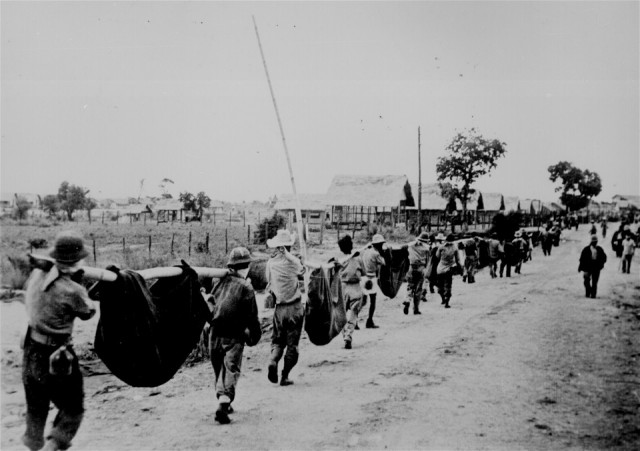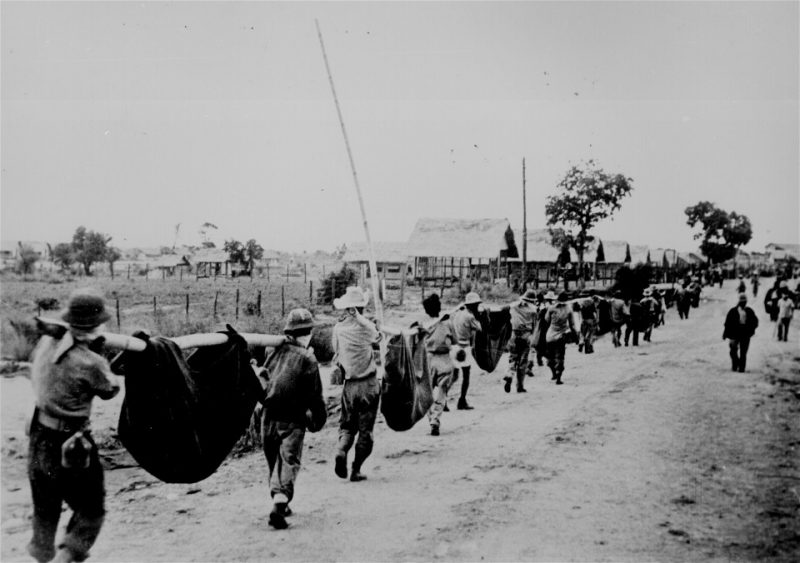
The role of Filipino troops during World War Two is little remembered in the history of the war. Hundreds of thousands of Filipino soldiers joined the US military in the Pacific theatre of World War Two from 1941 through to 1945.
The Filipinos were promised that if they joined the Allied war effort they would be awarded US citizenship along with having war veterans’ benefits once the war ended. Unfortunately, when the war was over the US Congress and President Truman went back on this promise. Only around 4000 Filipino veterans were awarded US citizenship out of a total of 200,000 who fought in the war.
The defending forces outnumbered the Japanese invaders by 3 to 2, but were a mixed force of non-combat experienced regular, national guard, constabulary, and newly created Commonwealth units; the Japanese used their best first-line troops at the outset of the campaign. The Japanese 14th Army also concentrated its forces in the first month of the campaign, enabling it to overrun swiftly most of Luzon.
Japan’s Imperial Army had the objective of occupying all Asian nations including Korea, China, Taiwan, as well as parts of Russia. Many of the countries they sought to invade remained colonial countries of the West.
Once the Japanese occupied French Indochina, the US stepped up its recruitment of Filipino troops. General Douglas MacArthur was in charge of the Pacific forces as the Japanese attacked Pearl Harbour and then less than half a day later began an attack on the Philippines.
The invasion of the Philippines had three objectives:
- To prevent the use of the Philippines as an advance base of operations by American forces;
- To acquire staging areas and supply bases to enhance operations against the Netherlands East Indies; and
- To secure the lines of communication between occupied areas in the south and the Japanese Home Islands.
Taken by surprise, the US Forces and Filipino defence forces and went into battle without adequate training and many Filipino hadn’t even fired a gun. They Filipino were also under-resourced and under-equipped from a lack of bedding, medical equipment, clothing and supplies. Also, their weapons were outdated; most were using rifles and guns from World War One. Some units didn’t even have enough food to last the campaign.
The Allied troops failed to fend off the Japanese attack and they retreated to the southern Bataan peninsula to defend Manila Bay. After six months of defending the peninsula the Allied forces surrendered to the Japanese.
The defeat was the beginning of three and a half years of harsh treatment for the Allied survivors, including atrocities like the Bataan Death March and the misery of Japanese prison camps, and the “Hell Ships” on which American and Allied men were sent to Japan to be used as labour in mines and factories.
Although the campaign was a victory to the Japanese, it was also a military setback as it took a longer time than anticipated to defeat the Filipinos and Americans. This required forces that would have been used to attack Borneo and Java to be diverted to the battle in the Philippines, and also slowed the advance on New Guinea and the Solomon Islands.
Japan occupied the Philippines for around two and a half years before US forces began the liberation of the country at the end of 1944.
